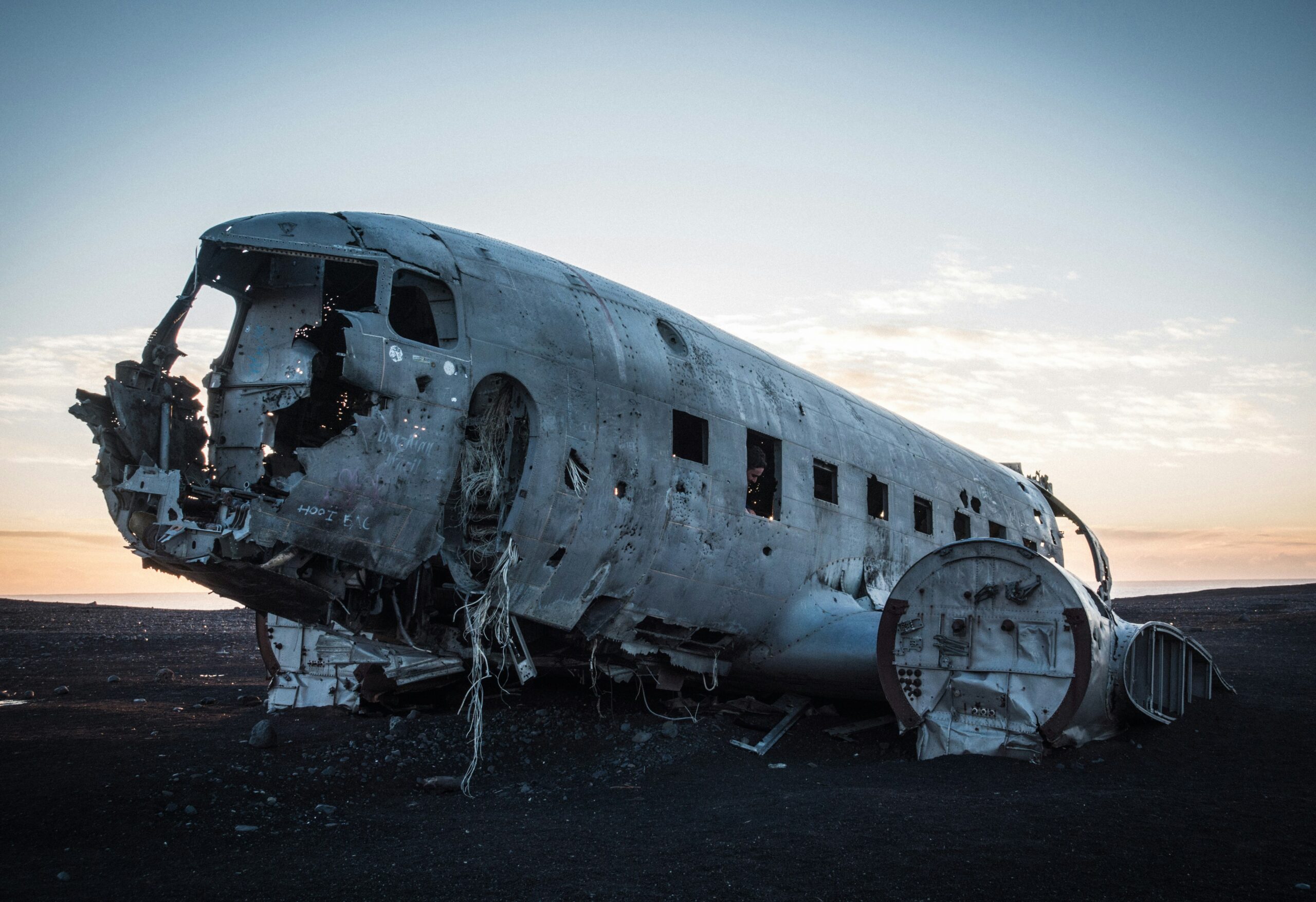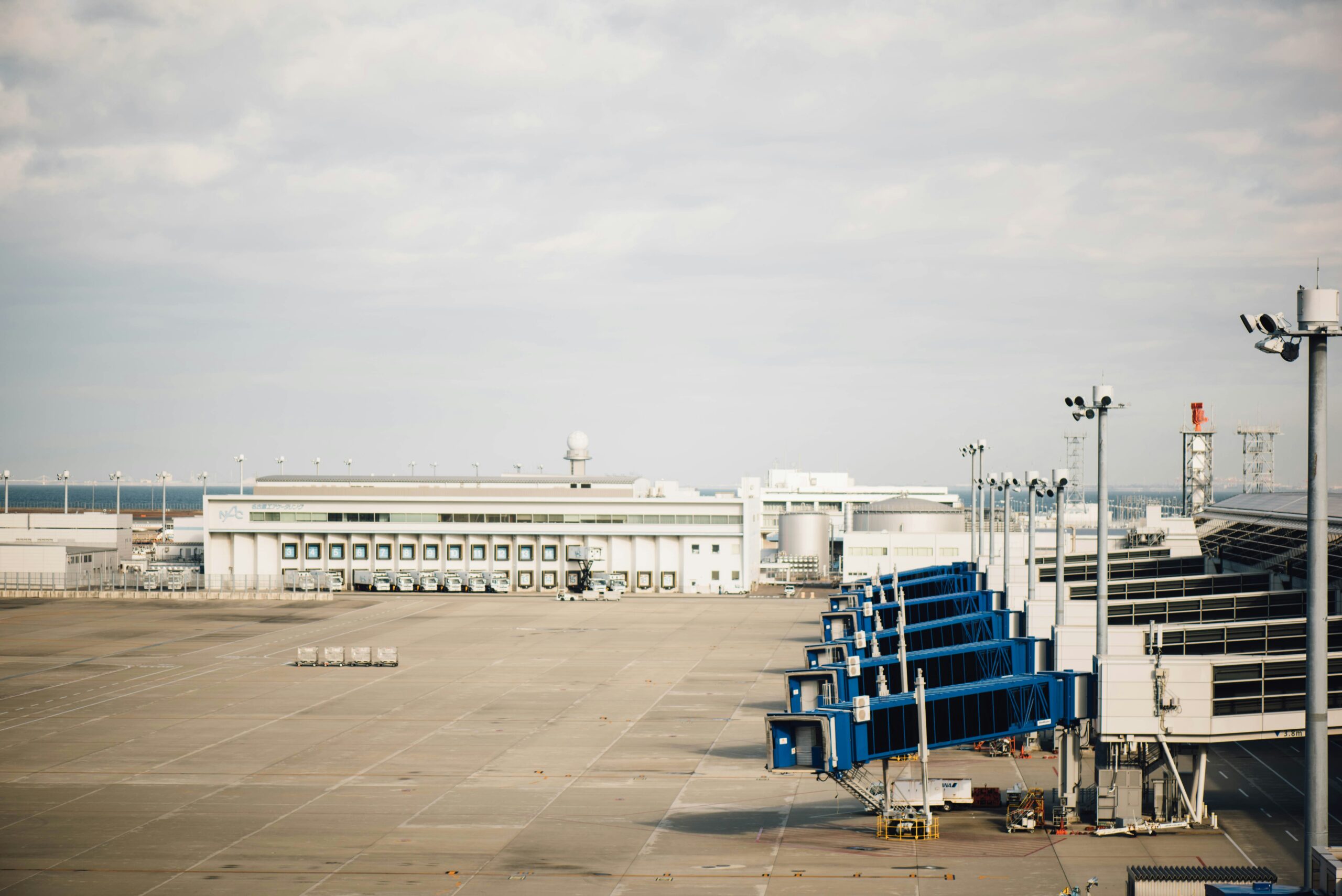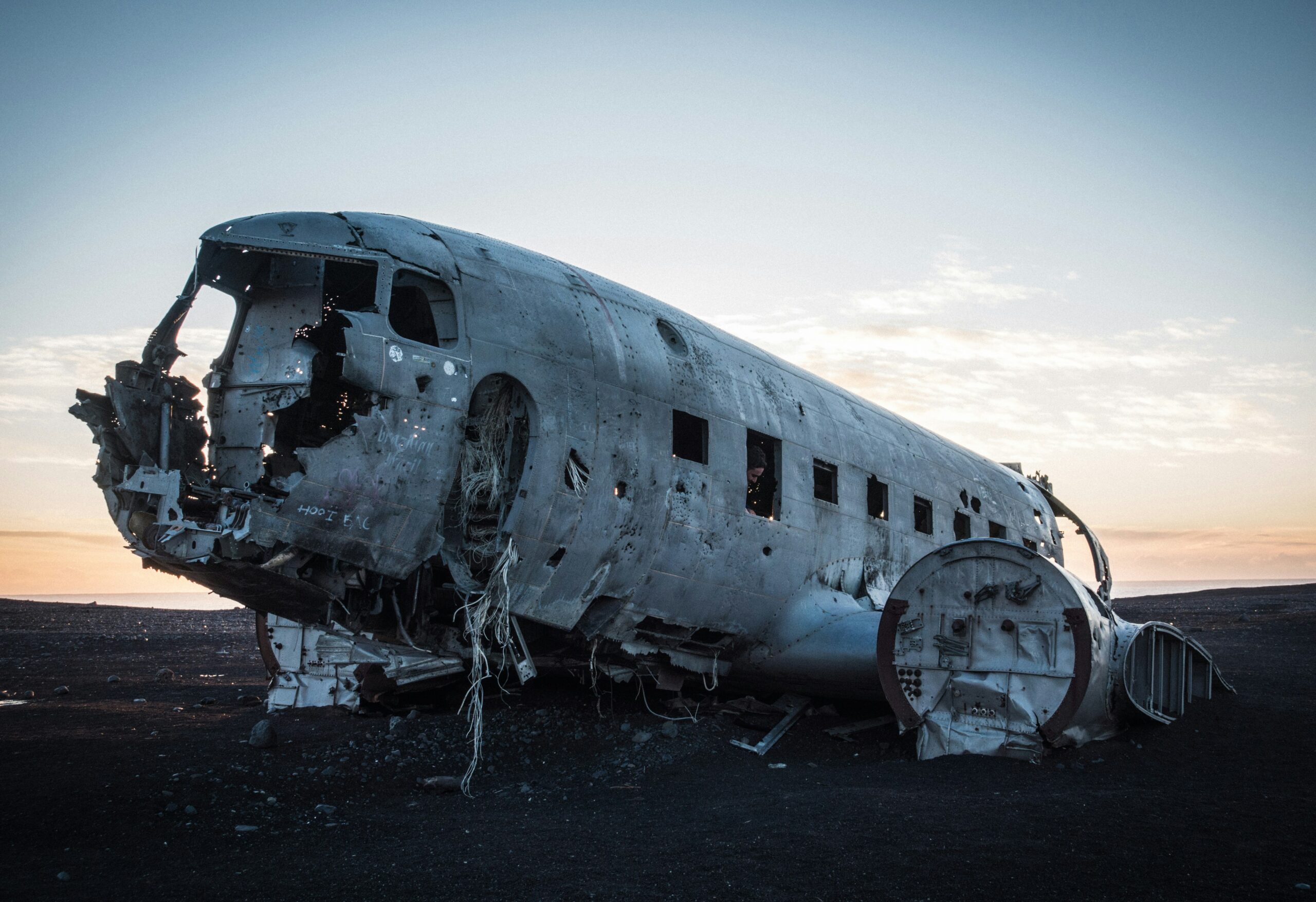Introduction to Plane Crashes in Washington, D.C.
The issue of plane crashes remains a critical topic, particularly concerning major urban centers such as Washington, D.C. The occurrences of aviation incidents in the American capital are noteworthy due to the city’s unique geographical and political significance. While plane crashes are relatively infrequent on a national scale, when they do take place in Washington, D.C., the impact can be profound, affecting not only those directly involved but also the local community and the broader context of national aviation safety policies.
Washington, D.C. has been the site of several notable aircraft accidents throughout history. These incidents have highlighted vulnerabilities in air travel practices and have often led to heightened scrutiny of regulations that govern aircraft operations. The gravity of plane crashes in this vital area is underscored by the potential for catastrophic outcomes, both in terms of loss of life and damage to public infrastructure. The repercussions can ripple through society, leading to changes in aviation policy and public perception regarding flight safety.
In light of these factors, understanding the context and implications of plane crashes in Washington, D.C. becomes essential. This comprehensive overview aims to explore the various facets of this topic, including the frequency of such incidents, their impacts, and the evolving responses from aviation authorities and governmental entities.
Major Plane Crashes: Case Studies
Washington, D.C., while predominantly known as the nation’s capital, has also been the site of significant aviation incidents throughout its history. This section examines several major plane crashes, providing insights into aircraft types, dates, locations, and the ensuing responses from emergency services.
One remarkable incident is the crash of American Airlines Flight 5342, which occurred on January 17, 1990. This aircraft, a McDonnell Douglas MD-80, was on approach for landing at Washington National Airport when it experienced a catastrophic failure leading to a crash just short of the runway. The incident resulted in six fatalities among the 54 persons on board. In the aftermath, emergency services promptly engaged, with rescue teams arriving within minutes to manage the scene, demonstrating the critical importance of emergency preparedness in urban airspace.
Another notable case is the Black Hawk helicopter incident, which took place on February 26, 2001. A military Black Hawk, while performing a training flight, collided with a building near the National Mall. Fortunately, there were no fatalities on the ground, but the crash resulted in significant injuries to crew members. The response from emergency services was extensive, involving local police and fire departments, as well as military personnel, highlighting the complexity of responding to such events in a densely populated area.
These case studies not only underscore the tragic consequences of aviation accidents but also emphasize the importance of thorough investigations and the implementation of safety improvements in air travel. By analyzing these incidents, we can gain insights into the multifaceted nature of aviation safety and the ongoing efforts to prevent future occurrences.
The Role of Aviation Safety Regulations
Aviation safety regulations play a crucial role in mitigating the risk of aircraft crashes in Washington, D.C., a hub of political and commercial activity. Post the infamous accidents of the mid-20th century, stringent legislation evolved, leading to the establishment of comprehensive safety protocols that govern nearly every aspect of aviation. This legislative framework encompasses the actions and responsibilities of aircraft manufacturers, airlines, and various governmental agencies dedicated to the oversight of aviation operations.
Among the pivotal regulations is the Federal Aviation Administration (FAA), which has continually updated its rules to adapt to emerging technologies and safety challenges. The FAA not only enforces safety standards but also conducts regular inspections and certifications of aircraft and airline operations. Additionally, the National Transportation Safety Board (NTSB) plays an important role in investigating aviation incidents, analyzing data to propose new safety measures. These governmental bodies have drastically reduced accident rates by ensuring compliance and promoting a culture of safety within the aviation community.
Aircraft manufacturers are also integral to enhancing aviation safety. They invest heavily in research and development, aiming to innovate safer materials and designs. Industry collaboration with airlines ensures that operational practices align with the latest technological advancements. The development of advanced navigation systems, collision avoidance technologies, and reinforced cockpit designs reflects a concerted commitment to improving safety protocols.
The evolution of these measures over the years has led to significant reductions in crash incidents, underscoring the effectiveness of stringent safety regulations. The interplay among legislative actions, innovative technologies, and robust operational protocols has contributed to a notable decline in aviation accidents in Washington, D.C. Through continuous monitoring and adaptability, the aviation industry strives to sustain high safety standards, ensuring the protection of individuals traveling within and through this critical airspace.
Investigative Procedures Following a Crash
After a plane crash occurs in Washington, D.C., a series of systematic investigative procedures are initiated to uncover the factors contributing to the accident. One of the primary organizations responsible for these investigations is the National Transportation Safety Board (NTSB), an independent federal agency tasked with determining the causes of transportation accidents and promoting safety improvements. The NTSB typically leads the investigation in coordination with local authorities, the Federal Aviation Administration (FAA), and other relevant organizations.
Initially, the investigation begins with securing the crash site to preserve evidence. This includes preventing unauthorized access and collecting data from the wreckage, which helps in understanding the circumstances of the crash. Investigators conduct a thorough examination of the debris field, analyzing the components of the aircraft and the environment at the time of the accident. Witness statements are crucial in piecing together the timeline of events leading to the incident.
Furthermore, investigators also focus on reviewing the aircraft’s maintenance records, pilot logs, and air traffic control communications. This information helps establish whether human factors, mechanical failures, or procedural errors may have played a role in the accident. The methodologies used encompass extensive data analysis, which involves both qualitative and quantitative research approaches, ensuring a comprehensive understanding of the circumstances surrounding the crash.
Once all evidence and data have been collected and analyzed, the NTSB compiles a detailed report outlining their findings and recommendations aimed at preventing similar accidents in the future. This reporting process not only provides closure to the victims’ families but also enhances aviation safety standards. In the wake of previous accidents, various lessons have been learned, emphasizing the ongoing need for vigilance and improvement within the aviation industry.
The Human Element: Victims and Families
The aftermath of plane crashes in Washington, D.C., extends far beyond the physical scene of the disaster, deeply affecting the lives of victims and their families. The emotional toll on those left behind is immeasurable, often resulting in profound grief, anxiety, and trauma. Families are forced to navigate an overwhelming landscape of loss, frequently dealing with not only the void left by a loved one but also the stigma surrounding air travel incidents.
Survivors, too, bear the weight of their experiences. Many grapple with post-traumatic stress disorder (PTSD), making it difficult to return to normal life. A poignant example can be seen in the story of a family who lost their mother in a crash. The children, now adults, share their ongoing struggle to process the sudden absence of a nurturing figure in their lives. Such narratives highlight how fundamental the loved one’s presence is to emotional stability and development.
Support systems play a critical role in the recovery of victims and families alike. Various advocacy groups focus on providing resources, counseling, and a community for those affected. They conduct workshops that deal with bereavement and trauma, addressing the unique challenges that arise from aviation-related incidents. Furthermore, these organizations often facilitate annual memorials that honor the lives lost, allowing families to come together, share their stories, and cultivate a sense of solidarity in their grief.
Through these initiatives, individuals begin to find strength in shared experiences. The collective support fosters resilience and creates avenues for healing, allowing victims’ loved ones to rebuild their lives while commemorating those they have lost. Ultimately, the human element in the aftermath of plane crashes emphasizes the interconnectedness of community and the need for continued dialogue about tragedy, resilience, and remembrance. Such discussions are essential for understanding the comprehensive impact of aviation disasters within Washington, D.C.
Technological Advances in Aviation Safety
The field of aviation has witnessed remarkable technological advancements that have greatly contributed to improving safety in air travel. Modern aircraft design embodies these innovations, focusing on structural resilience, aerodynamics, and energy efficiency. Aircraft today are equipped with state-of-the-art materials and engineering that not only enhance performance but also mitigate risks associated with potential crashes. Innovations such as fly-by-wire systems, which replace traditional flight controls with electronic interfaces, significantly improve pilot control and reduce human error during critical phases of flight.
In addition to aircraft design, navigation systems have evolved substantially. Global Positioning System (GPS) technology now plays an integral role in enhancing navigational accuracy, providing pilots with precise location information while reducing the likelihood of navigational errors. Advanced avionics systems, integrated with real-time weather data, allow pilots to make informed decisions regarding flight routes, particularly in adverse weather conditions. These advancements create safer flying experiences overall.
Moreover, enhanced pilot training programs incorporate advanced simulation technologies that allow pilots to experience various emergency scenarios without real-world consequences. These programs emphasize decision-making skills and situational awareness, preparing pilots to respond effectively to unexpected situations. Regular updates to training protocols, based on the latest safety data and accident investigations, create a culture of continuous improvement within the aviation industry.
However, while technological advancements have contributed immensely to aviation safety, they are not without challenges. The integration of new technologies often requires significant financial investment and a period of adjustment, which can expose systems to vulnerabilities during the transition. Moreover, over-reliance on automated systems may lead to skill degradation among pilots if not managed appropriately. Thus, while the trajectory of technological advancements points towards increased safety, it is essential for the industry to maintain a balance between innovation and operational efficacy.
The Media’s Role in Reporting Plane Crashes
The coverage of plane crashes by the media plays a pivotal role in shaping public perception regarding air travel safety, often influencing both anxiety and awareness among the populace. Following a tragic event, the immediacy and sensationalism inherent in reporting can lead to heightened emotional responses from the public. This phenomenon is particularly pronounced when catastrophic accidents occur in heavily populated areas such as Washington, D.C., where media outlets aim to capture the attention of a wide audience. The emotional weight of such incidents can sometimes overshadow more nuanced discussions about aviation safety, perpetuating fears despite the overall low probability of airline accidents.
Moreover, ethical considerations in reporting on plane crashes are critical. Journalists face the challenge of balancing the need for timely information with the responsibility to report facts without inciting unnecessary panic. Using respectful language and presenting verified details can significantly affect how communities process these painful events. Misinformation or exaggeration can lead to public distrust, not only toward the media but also toward aviation authorities tasked with investigating these incidents. Accident reporting must reflect accuracy to support ongoing investigations effectively, as investigative bodies rely on the integrity of disclosed information to maintain transparency and credibility.
Sensationalism can detract from the critical aspects of aviation safety and the advancements made in the industry. Inaccurate portrayals may create a narrative that air travel is inherently dangerous, disregarding statistical data that indicate its safety. Therefore, responsible journalism must strive for balanced coverage that informs the public while upholding the dignity of those affected by such tragedies. An ethical approach promotes informed dialogue regarding air travel safety, encouraging a more reasoned public review of the aviation industry. In conclusion, the media wields significant influence in shaping perceptions of airplane crashes and must navigate ethical responsibilities with care to foster public understanding and trust.
Future of Air Travel Safety: What Lies Ahead?
The future of air travel safety is anticipated to undergo significant transformation as stakeholders in the aviation industry work tirelessly to minimize risks. One of the focal points of upcoming innovations is the enhanced regulatory framework that could emerge in response to evolving technological advancements and past incidents. Regulatory bodies such as the Federal Aviation Administration (FAA) and the International Civil Aviation Organization (ICAO) are likely to revise existing safety standards and introduce new regulations to improve overall safety effectiveness.
Another area of considerable focus is the integration of cutting-edge safety technology. This includes advancements in aircraft design, enhanced radar systems, and communication protocols which can significantly reduce the likelihood of accidents. Technologies such as Automatic Dependent Surveillance–Broadcast (ADS-B) have already begun to improve situational awareness for pilots and air traffic controllers, and further developments in this area are expected. Research into materials and engineering innovations will also likely produce safer aircraft that are more resilient in the event of an unexpected incident.
Moreover, the increasing role of artificial intelligence in aviation safety is set to transform operations. AI can assist in predictive maintenance, analyzing vast amounts of data to identify underlying issues before they escalate into serious problems. Furthermore, machine learning algorithms can be implemented in flight training programs to enhance pilots’ decision-making and operational proficiency. Experts predict that as AI technology continues to advance, it will play an indispensable role in mitigating risks associated with air travel.
In forecasting the future landscape of aviation safety, it becomes evident that a multifaceted approach, combining regulatory reforms, technological advancements, and the integration of artificial intelligence, will be fundamental in ensuring that air travel remains one of the safest modes of transportation. Industry leaders and regulators alike will need to collaborate closely to adapt and implement these changes effectively.
Conclusion: Reflecting on Lessons Learned
Throughout this exploration of plane crashes in Washington, D.C., a clear pattern emerges highlighting the need for continual vigilance and improvement in aviation safety practices. Various incidents have been dissected, uncovering critical insights into the factors that contribute to these tragic events. From technical malfunctions to human error, the causes of plane crashes serve as stark reminders of the complexities involved in aviation operations.
One of the prominent lessons learned from past accidents is the importance of rigorous training and preparedness among flight crews. These elements are essential not only for ensuring compliance with safety protocols but also for fostering a culture of safety that prioritizes the well-being of all passengers and crew members. Implementing robust training programs can significantly mitigate risks associated with human error, thus enhancing overall aviation safety.
Moreover, technology plays a crucial role in preventing aviation mishaps. As aircraft systems evolve, ongoing investment in safety technologies must remain a priority within the industry. Innovations such as advanced navigation systems, automated monitoring tools, and improved communication channels can contribute to safer flight operations. Engaging with these advancements is vital for both industry stakeholders and passengers alike, as understanding technological improvements can lead to a more informed and proactive approach to safety.
In addition to these lessons, it is crucial for individuals to actively participate in fostering a safety-conscious environment. This includes staying informed about aviation safety practices and advocating for transparency and accountability among airlines and regulatory bodies. For readers interested in furthering their understanding of aviation safety, numerous resources are available, including industry reports, safety bulletins, and online courses focused on aviation risk management.
Ultimately, reflecting on the lessons learned from plane crashes in Washington, D.C. compels us all to remain engaged and proactive in matters of aviation safety. Continuous improvement in safety practices not only honors the memories of those lost in tragic incidents but also safeguards the future of air travel for generations to come.


